Soils in India
by Devender
0 1252
Soil is the uppermost layer of the Earth's crust and serves as the medium in which plants grow. Therefore, it provides support to life on Earth.
Soils in India
There are a number of factors that contribute to the formation of soil and its fertility such as:
- Parent rocks
- The characteristics of the parent rock influence the characteristics of the soil
- Climate
- Slope
- Mountains have thin soil cover whereas plains have thick soil cover
- Time
- The changes in the soil organic, as well as chemical, are equally important
- Residual Soil - form at the place of their origin for ex. Black soils
- Transported Soil - transported from the place of their formation for ex. Alluvial soils
- Its largest tract is Satluj Ganga Plains
- It has very little connection with Parent material
- It is rich in Potash but deficient in Nitrogen & Humus content
- It is good for both rabi and Kharif crops
- It is also good for jute cultivation in the delta region
- It is best for cereals & Pulses
- It is the residual type of soil
- It is deficient in organic content, phosphorus, nitrogen
- It is rich in lime, iron, magnesia, alumina and also contains potash
- It is highly clayey, impermeable, and can hold moisture
- It has very low water retentive capacity
- It is deficient in nitrogen, lime, magnesia, hummus, and phosphate
- It is rich in potash and is porous, aerated & friable in nature
- It can become fertile with the proper use of fertilizers and irrigation
- It is the residual type of soil
- It is formed in areas of heavy rainfall
- It is highly found in Highland or Plateaus with heavy rainfall
- It is not useful for agriculture except for plantation crops like Tea, Rubber, Coffee & Cashews
- It is of Coarse texture with soft & friable nature
- It is used as building material & in making bricks
- It is poor in lime, Nitrogen, Magnesium & Humus content
- It is rich in Feo & Alumina
- It is infertile and doesn't support vegetative growth
- The salinity is also caused due to excessive irrigation in dry conditions that promotes capillary action
- It is sandy, porous, coarse & rich in salts
- It is fertile, water being the only limiting factor
- It is good for growing cereals such as Jowar, Bajra, Ragi & Oilseeds
- These soils are thin and infertile in nature
- These are rich in humus
- It is deficient in potash, phosphorous, and lime
- These soils are loamy & silty on the valley side and coarser on upper slopes
- They are useful for Tea, coffee, spices, and tropical fruits
- Salinity of soils
- The addition of Gypsum, rice husk & rice straw counters alkalinity by forming light acids
- The crop rotation technique that involves Daincha (Green Fodder) also counters salinity
- Over-grazing
- Deforestation
- The action of wind, water, glacier, etc.
- Topography such as steep slopes & heavy rainfall
- Faulty methods of agriculture, over-irrigation, shifting agriculture, etc.
- Other anthropogenic factors such as mining, industrial activities, etc.
- Loss of fertile topsoil
- Lowering of the underground water table and decreasing soil moisture
- Drying of vegetation and extension of arid lands
- Increase in the frequency of droughts and floods
- Silting of the river and canal beds
- Recurrence of landslides
- Terrace Farming
- Contour ploughing
- Contour barriers/Contour trenching
- Afforestation
- Shelter Belts
- Cover crops/Crop rotations
- It acts as a green manure that replenishes nitrogen and other critical nutrients
- It also helps suppress weeds & increase soil fertility
- No-till farming
- It increases the amount of water that infiltrates into the soil
- It also increases organic matter retention and cycling of nutrients in the soil
- It keeps soils anchored in place rather than having bare ground exposed to wind and water
- Strip Cropping
- Contour strip cropping - Cultivation of soil protecting crops in strips alternating with erosion permitting crops. The strips should be across the slope.
- Field strip cropping - Plants are cultivated in parallel strips across the slopes
- Mulching
- A protective layer of a material that is spread on top of the soil
- Construction of Dams
- It keeps the speed of water in check and thereby save soil from erosion
The parent rock is the rock from which the soil is formed. The process of weathering decomposes and disintegrates the parent rock to form soil.
For example - Lava rocks black soils and iron oxide rich rocks red soils.
The climate around the rock influences the process of weathering the rock.
The nature of the slope influences the accumulation of the soils.
It provides maturity to the soils.
The various forces of nature such as a change in temperature, actions of running water, wind and glaciers, activities of decomposers, etc. also contribute to the formation of soil
The soils in India are divided into two categories on the basis of their formation which are:
Types of Soils in India
1 Alluvial Soil
This type of soil is formed by depositional work of rivers valleys, flood plains & deltas. It is very highly fertile Riverine soil and is of transported type.
Khadar is deposited by flood annually and it is nonporous, clayey, and loamy.
Bhangar is above sea level, they are well-drained and drier. It is coarse in nature, contains kankar (lime nodules), pebbles, gravels.
The alluvial soil makes 22.16% of the total land area of India.
2 Black Soil
This type of soil is formed by the solidification of Lava and is mainly found in the Deccan Plateau. It is also known as black cotton soil or Regur soil.
The color of this soil is black is because of black cotton soil or Regur soil derived from plutonic lava materials. It is highly fertile but less than alluvial soil.
It is plowed in the dry season as on evaporation, the soil develops cracks which are good for seed penetration. It is found in the region - Maharashtra, Gujrat, Madhya Pradesh, Andhra Pradesh, parts of Tamil Nadu.
Black soil makes 16.6 % of the total land area of India.
3 Red & Yellow Soil
This type of soil is formed by weathering of Igneous (crystalline) & metamorphic rocks and it is Transported type of soil. It is less fertile than Alluvial and black soil. It is red in color due to the presence of Ferrous oxide and also looks yellow when in hydrated form.
It is found in the regions - Periphery areas of the Deccan Plateau viz. Chhotanagpur plateau, Telangana, Nilgiris, Tamil Nadu, Karnataka, Andhra Pradesh. It is suitable for the cultivation of millets, pulses, Linseed, tobacco, etc.
It forms around 10.6% of the total Indian land area.
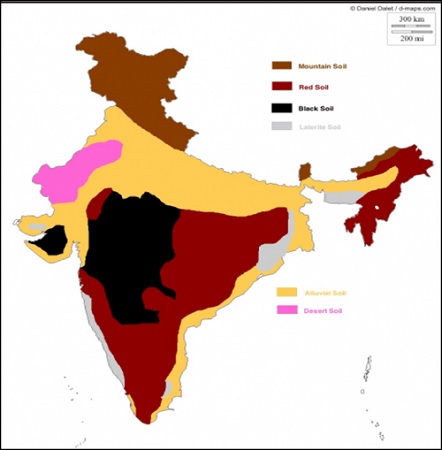
4 Laterite Soil
This type of soil is formed under conditions of high temperature and heavy rainfall with alternate wet and dry periods. Therefore, it is formed strictly under monsoon conditions by leaching away siliceous matter.
Rain leaches away Lime & Silica which leaves insoluble Feo & Al compounds known as Desilication. As bacteria thrive at high temperatures, the humus content of the soil is fast removed by bacteria.
It is found in regions - Meghalaya, Karnataka, Kerala, Tamil Nadu, hilly regions of Assam, Rajmahal hills, and Chhotanagpur plateau.
It forms 7.2% of the total Indian land area.
5 Saline/Alkaline Soil
It is found in arid or semi-arid conditions along with waterlogged areas and it is highly saline due to dry climate, poor drainage & high evaporation.
It is found in Bihar, Rajasthan, UP., Punjab, Haryana, Maharashtra.
6 Arid Soil
It is found in areas where rainfall is less than 50 cm and it is covered with a thick brown mantle which inhibits soil growth. It is saline in nature due to high evaporation.
It is originated from the mechanical disintegration of the ground rock by deposition by the wind. The low rainfall and high temperature are reasons for the formation of this soil.
It is mainly found in regions - SW Haryana, Punjab, and W – Rajasthan
It forms around 3.9% of the total land area of the country.
7 Mountain Soil
This type of soil is prone to soil erosion where the topsoil gets washed away due to the steep slopes of the mountains after heavy rainfall. It includes peat, meadow, and forest hill soils.
It is found in the regions - Jammu and Kashmir, Himachal Pradesh, Uttaranchal, Assam, Sikkim, Arunachal Pradesh
8 Peaty/Organic Soil
It is found in high rainfall and high humid areas of West Bengal, Orissa & Kerala. It is rich in humus & organic content, and sometimes alkaline too. It is heavy, dark, and acidic in nature.
The predominance of chloride & sulfates of N, Ca & Mg, especially of NaCO3. It decreases the soil fertility, quality of fodder. It also gives difficulties in Housing & road construction.
Soil Erosion
The washing away of the topmost fertile layer of the soil due to the action of water and wind is known as Soil erosion. The other common causes of Soil Erosion are:
Effects of Soil Erosion:
Soil Erosion Prevention Techniques
It is used on hilly slopes where terraces act as bunds and prevent the soil from being washed away. The farming is done on a unique step-like structure and the force of water running off is slowed down.
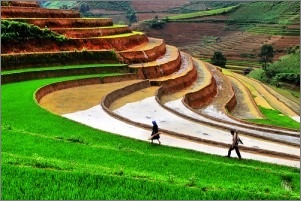
It is very common on small farms and in underdeveloped countries as it doesn't require mechanized equipment.
Land should never be ploughed up & down because it increases soil erosion, the ploughing should be done along contours on a slope that prevents soil from being washed away by rainwater or by surface runoff.
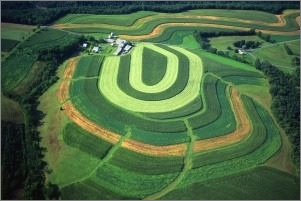
The contours act like bunds preventing soil erosion by allowing water to slowly penetrate the soil. Terraces are leveled into steps like small fields with even slopes.
Contourstrips intercept downslope flowing water and soil particles. Several 2 feet by one-foot trenches are formed across the slopes at suitable gaps.
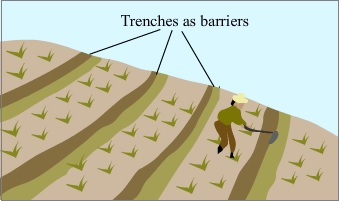
Tress seedlings are planted above the trench. These barriers slow down the water movement and reduce its erosive force. They also filter out and trap many of the suspended soil particles, keeping them from being washed out of the field.
It is the technique of planting trees along the edges of the fields, the wasteland, and on steep slopes to prevent soil erosion. It increases the capacity of the soil to retain water.
It is a line of trees or shrubs planted to protect an area, especially a field of crops from fierce weather. Farmers plant several rows of trees to keep the wind erosion in check. It is also known as windbreaks.
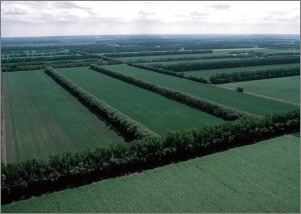
In this technique, cover crops such as legumes, white turnips, radishes, and other species are rotated with cash crops to blanket the soil year-round.
It is a way of growing crops or pasture from year to year without disturbing the soil through tillage. It is also known as zero tillage or direct drilling.
In this technique, crops are grown in alternate strips of land to check the impact of the winds. It is mainly used when a slope is too steep or when there is no alternative method of preventing soil erosion.
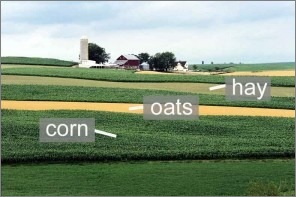
In this technique, the mulches materials are placed over the soil surface to maintain moisture and improve soil conditions. Mulches can either be organic such as - grass clippings, straw, bark chips, and similar materials, or inorganic such as - stones, brick chips, and plastic.
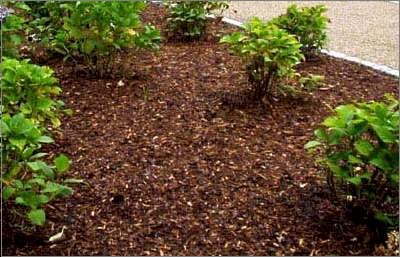
This is also an effective soil erosion prevention technique as rivers cause soil erosion and Dams are built in the upper course of rivers to control erosion of soil.

Share:

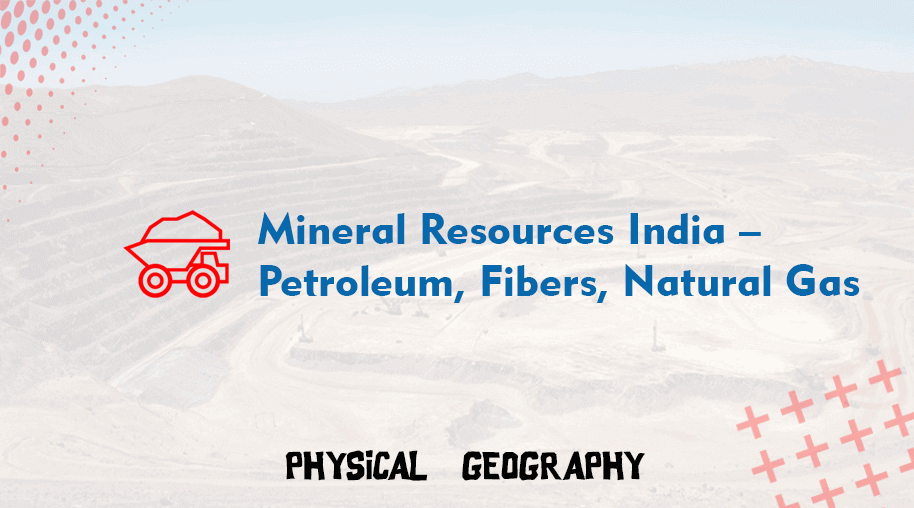
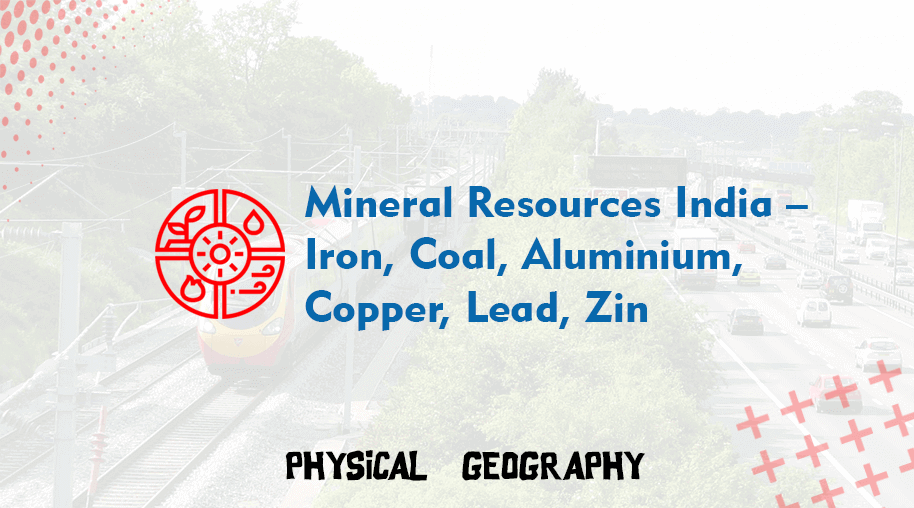




Comments
Waiting for your comments